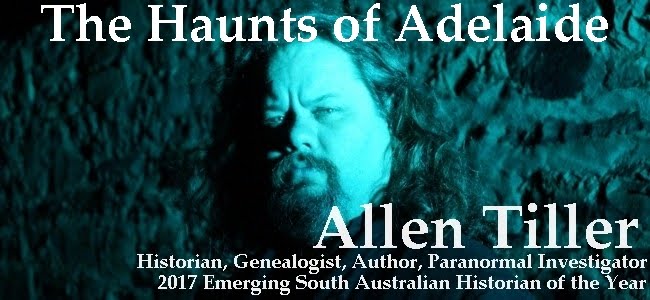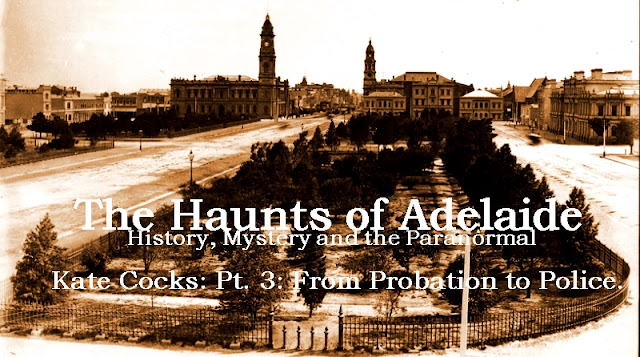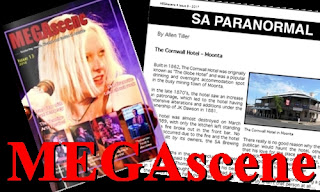A Demented Husband
 |
| Port River - Photo ©Allen Tiller 2016 |
On the 27th of December 1910 the body of 38-year-old Glanville Greengrocer, William Finch Battye, was found floating face down in the Port River. Thought to be a suicide, an inquest into how and why he was dead launched. An inquest that would uncover a far deeper tragedy.
A couple of years prior to his death, William had married Annie Campbell Othen on the 30th of September 1908 in Port Adelaide. Seven months later, a baby boy was born, William George, on the 13th of May 1908
From all reports at the time, the couple seemed like they were in love and very happy, so why would William Senior kill himself?
The police arrived on Carlisle Street, Port Adelaide at 1am on the 27th of December 1910 after reports of a fire at the address. First on the scene was Corporeal J.J. Maloney, who later stated in court, that when he arrived, he saw the body of a woman and small child on the balcony of the premises. He was later informed by the fire chief, that they had removed the burnt corpse from the bed, and placed it on the balcony.
The Corporeal searched the house and found on the bed a broken aerated-water bottle, the other half of which was laying on the floor. He found a tin of kerosene near the bed, but could not smell kerosene in the burnt bedding, nor in the clothing of the victims. There were a candle and a box of matches on the nightstand, but no spent matches in the room.
The Corporeal searched the house and found on the bed a broken aerated-water bottle, the other half of which was laying on the floor. He found a tin of kerosene near the bed, but could not smell kerosene in the burnt bedding, nor in the clothing of the victims. There were a candle and a box of matches on the nightstand, but no spent matches in the room.
Further investigation revealed an expired fire insurance policy, and a life insurance policy for £250, which had been taken out on December 8th, 1910. Also found was £9 in banknotes, two half-sovereigns, and 12/- in silver and a watch and chain, from which the constable concluded it was most probable that the deaths were not part of a robbery.
No evidence was found to determine the cause of the fire…
Annie and baby William had wounds on their heads, but that had not been the cause of death, they had both suffocated to death in the fire. Their bodies had been severely burnt in the house fire, but, William Snr’s body, pulled from the Port River, had also been badly burnt, but he was not found in the remains of the burnt building.
After hearing evidence from the brother of Annie, and a brother of William, and also from Corporeal Mahoney, Dr W J Gething, the Battye family doctor gave his evidence.
In his conclusions, he stated that William Snr’s burn wounds were sufficient to have caused his death before he died of drowning in the river.
In his conclusions, he stated that William Snr’s burn wounds were sufficient to have caused his death before he died of drowning in the river.
Dr Ramsey Smith, City Coroner delivered his verdict on whether the case was a murder-suicide, a robbery that went horrifically wrong, or something else. He stated:
“It would be evident that the three deaths were connected in some way, but the connection was purely a matter of conjecture. There were many possibilities, and, although in some cases a conjecture might amount to an almost moral certainty, it could not be said that that was so in the present case. To conclude on the evidence given that the husband murdered his wife and child, set fire to the house, and drowned himself would be legally unjustified. Verdicts must be founded on the facts of the evidence, and on the inferences, that could logically and legally be drawn from them. In the present case, there were many possibilities, and perhaps not a few probabilities. The fact that the husband's body was found in the water with marks of burning on it would alone make one hesitate even to suggest a theory of suicide. The verdict in the case.”
“Of Annie Campbell Battye was that she came to her death at Glanville on or about December 27, 1910, by suffocation, and the evidence did not show the cause of the fire. In the case of William.”
“George Battye, the verdict was that he came to his death at Glanville on or about December 27, 1910, by suffocation by fire, and the evidence did not show the cause of the fire. “
“In the case of William Finch Battye, the verdict was that he came to his death at Port Adelaide on or about December 28, 1910, by drowning and the evidence did not show how he came to be in the water.”
It is most likely we will never know what really happened to the seemingly loving Battye family leading up to their deaths, even the Coroner was unwilling to speculate. Whatever the case may have been, robbery, murder or murder-suicide, the Battye family met a horrible and tragic death.
May they Rest In Peace…
May they Rest In Peace…
Researched and written by Allen Tiller ©2015
Bibliography
1910 'GLANVILLE TRAGEDY.', The Advertiser (Adelaide, SA: 1889 - 1931), 30 December, p. 6. , viewed 27 Jan 2015, http://nla.gov.au/nla.news-article5227602
1910 'SIMPLE TRAGEDY.', The South Eastern Times (Millicent, SA: 1906 - 1954), 30 December, p. 3. , viewed 27 Jan 2015, http://nla.gov.au/nla.news-article200002571
1910 'THE GLANVILLE TRAGEDY', The Express and Telegraph (Adelaide, SA: 1867 - 1922), 29 December, p. 1. (4 o'clock.), viewed 27 Jan 2015, http://nla.gov.au/nla.news-article210005434
South Australia Police Gazette Indexes, 1862-1947. Ridgehaven, South Australia: Gould Genealogy and History, 2009.










